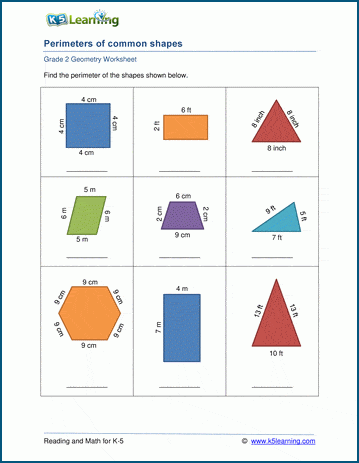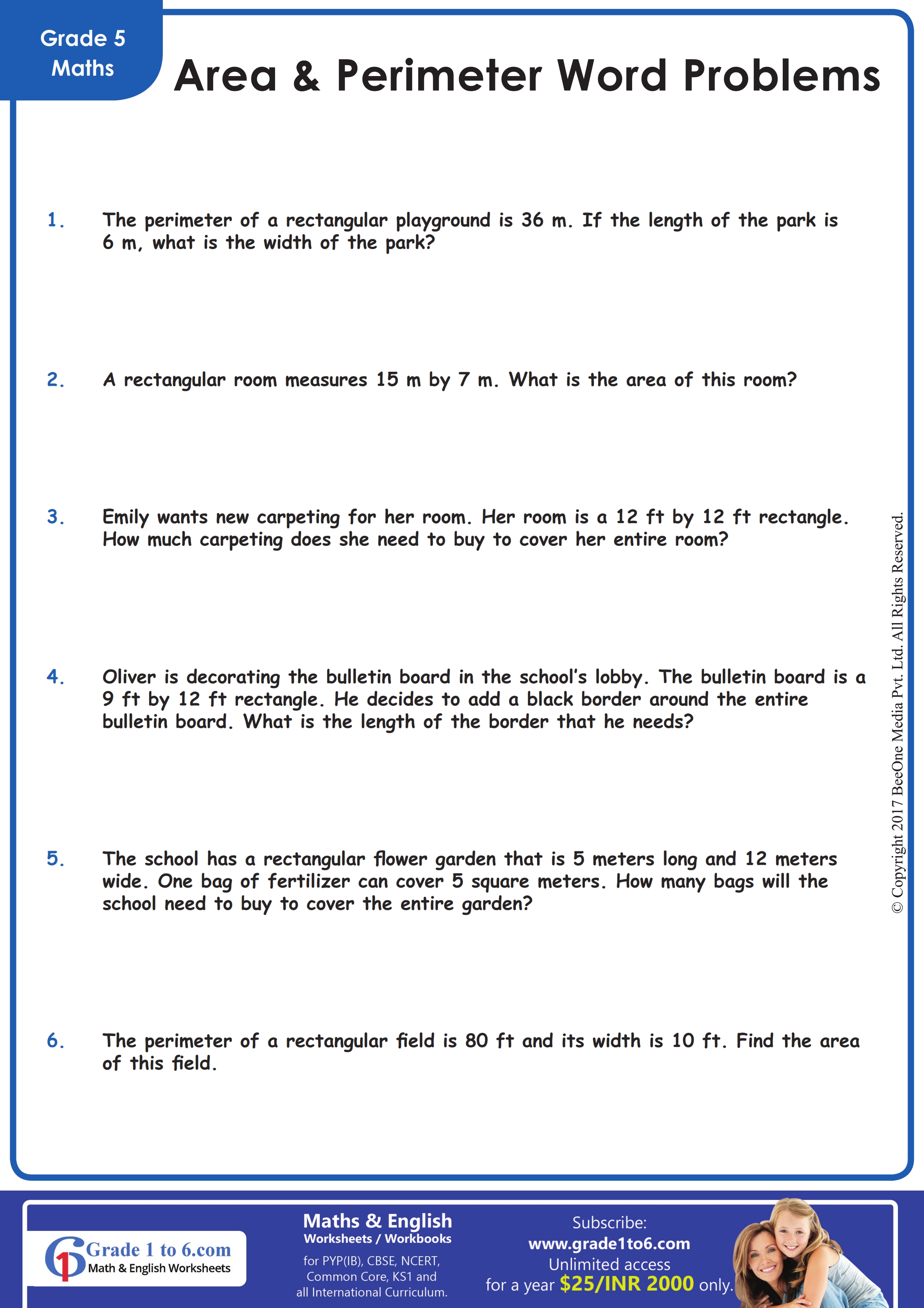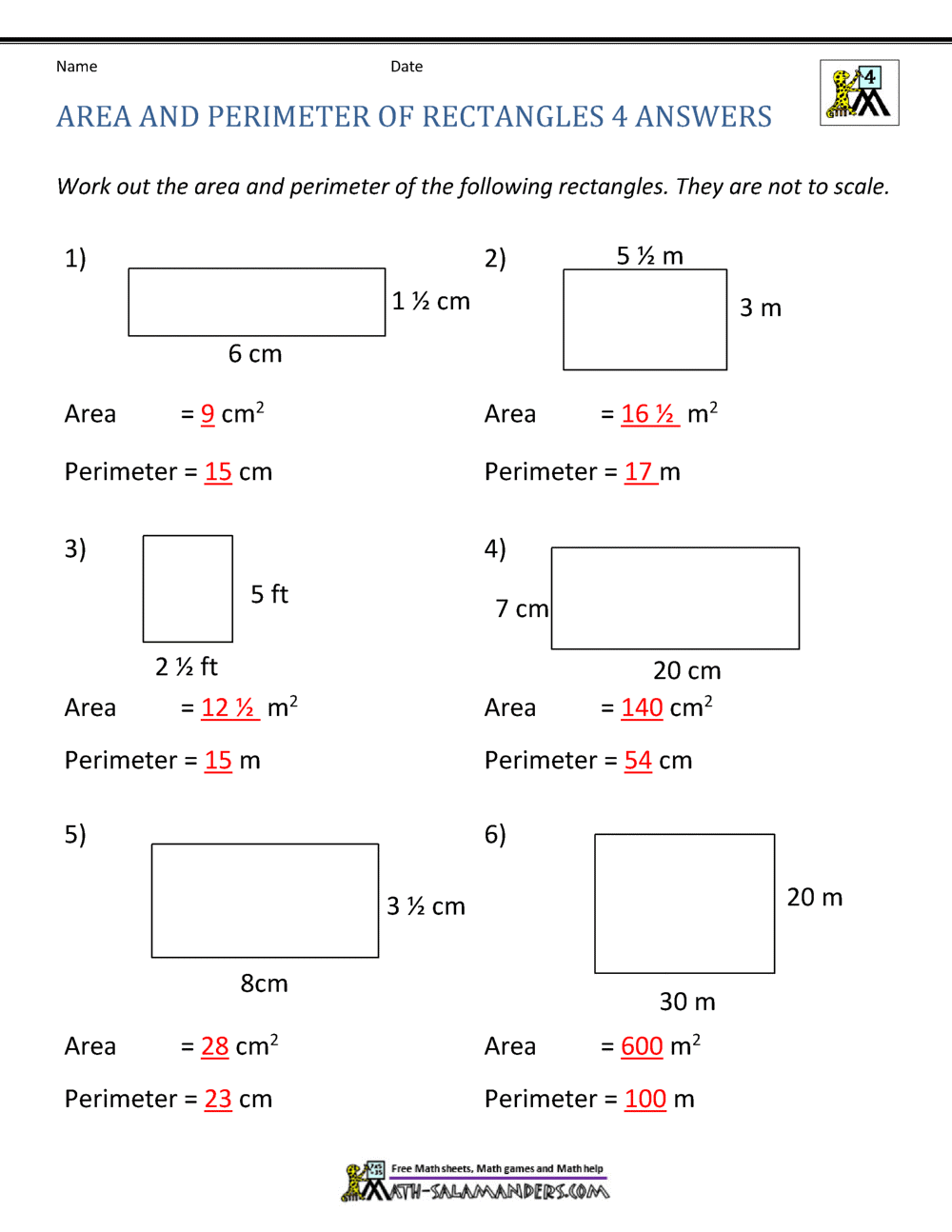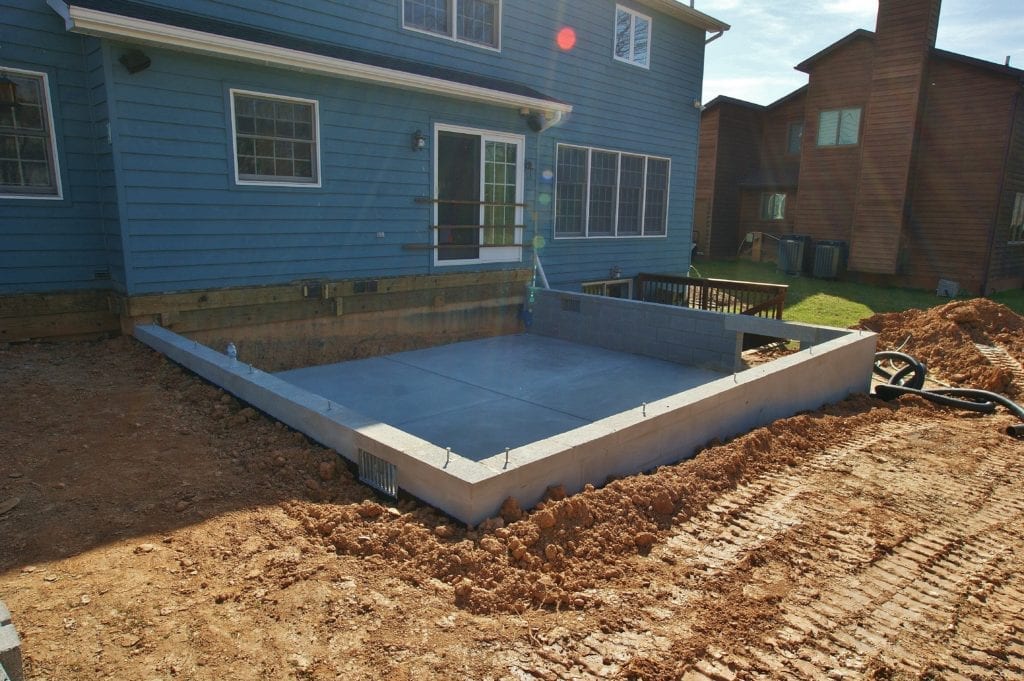Topic perimeter worksheet: Discover our comprehensive perimeter worksheet designed to help students master geometry skills. This engaging and educational resource covers perimeter calculations for various shapes, offering clear explanations, practice problems, and real-life applications. Ideal for different grade levels, our worksheet makes learning fun and effective, ensuring students gain confidence in their mathematical abilities.
Table of Content
- Perimeter Worksheet
- Introduction to Perimeter
- Perimeter Formulas
- Calculating Perimeter of Basic Shapes
- Perimeter of a Rectangle
- Perimeter of a Square
- Perimeter of a Triangle
- Perimeter of Regular Polygons
- Practice Problems
- Perimeter Word Problems
- Application of Perimeter in Real Life
- Perimeter Worksheets for Different Grades
- Printable Perimeter Worksheets
- Answer Keys and Solutions
- Additional Resources
- YOUTUBE: Khám phá bài tập chu vi qua video hướng dẫn chi tiết, giúp bạn nắm vững khái niệm và cách tính chu vi một cách dễ dàng.
Perimeter Worksheet
Understanding the perimeter of various shapes is a fundamental concept in geometry. This worksheet will help you practice calculating the perimeter of different geometric figures. The perimeter is the total distance around the edge of a shape. Below are exercises to enhance your skills in finding the perimeter of various shapes such as rectangles, squares, triangles, and more.
Exercise 1: Perimeter of a Rectangle
To find the perimeter of a rectangle, use the formula:
\[ P = 2(l + w) \]
Where \( l \) is the length and \( w \) is the width.
- Find the perimeter of a rectangle with length 8 cm and width 5 cm.
- Find the perimeter of a rectangle with length 12 cm and width 7 cm.
Exercise 2: Perimeter of a Square
To find the perimeter of a square, use the formula:
\[ P = 4s \]
Where \( s \) is the side length.
- Find the perimeter of a square with side length 6 cm.
- Find the perimeter of a square with side length 10 cm.
Exercise 3: Perimeter of a Triangle
To find the perimeter of a triangle, add the lengths of all three sides:
\[ P = a + b + c \]
Where \( a \), \( b \), and \( c \) are the lengths of the sides of the triangle.
- Find the perimeter of a triangle with sides 3 cm, 4 cm, and 5 cm.
- Find the perimeter of a triangle with sides 6 cm, 8 cm, and 10 cm.
Exercise 4: Perimeter of a Regular Polygon
To find the perimeter of a regular polygon, use the formula:
\[ P = n \times s \]
Where \( n \) is the number of sides and \( s \) is the side length.
- Find the perimeter of a regular pentagon with side length 4 cm.
- Find the perimeter of a regular hexagon with side length 7 cm.
Additional Practice Problems
- Find the perimeter of a rectangle with length 15 cm and width 10 cm.
- Find the perimeter of a square with side length 8 cm.
- Find the perimeter of an equilateral triangle with side length 9 cm.
- Find the perimeter of a regular octagon with side length 5 cm.
Solutions
| Exercise | Solution |
|---|---|
| Rectangle (8 cm, 5 cm) | \( P = 2(8 + 5) = 26 \) cm |
| Rectangle (12 cm, 7 cm) | \( P = 2(12 + 7) = 38 \) cm |
| Square (6 cm) | \( P = 4 \times 6 = 24 \) cm |
| Square (10 cm) | \( P = 4 \times 10 = 40 \) cm |
| Triangle (3 cm, 4 cm, 5 cm) | \( P = 3 + 4 + 5 = 12 \) cm |
| Triangle (6 cm, 8 cm, 10 cm) | \( P = 6 + 8 + 10 = 24 \) cm |
| Pentagon (4 cm) | \( P = 5 \times 4 = 20 \) cm |
| Hexagon (7 cm) | \( P = 6 \times 7 = 42 \) cm |

READ MORE:
Introduction to Perimeter
The perimeter of a shape is the total distance around its edges. It is an important concept in geometry that applies to various shapes including rectangles, squares, triangles, and polygons. Understanding how to calculate the perimeter helps in solving many real-life problems, from fencing a garden to framing a picture.
To calculate the perimeter, you need to know the lengths of all the sides of the shape. Here are the basic formulas for common shapes:
- Rectangle:
\[ P = 2(l + w) \]Where \( l \) is the length and \( w \) is the width.
- Square:
\[ P = 4s \]Where \( s \) is the side length.
- Triangle:
\[ P = a + b + c \]Where \( a \), \( b \), and \( c \) are the lengths of the sides.
- Regular Polygon:
\[ P = n \times s \]Where \( n \) is the number of sides and \( s \) is the side length.
Let's look at these formulas step by step:
- Identify the Shape: Determine which geometric shape you are working with (rectangle, square, triangle, or polygon).
- Measure the Sides: Measure the length of each side of the shape. For regular polygons, measure one side since all sides are equal.
- Apply the Formula: Use the appropriate formula for the shape to calculate the perimeter.
- Sum the Lengths: Add up all the side lengths (or use the multiplication in the formula for regular polygons) to get the total perimeter.
Practicing with different shapes and using these formulas will help you become proficient in calculating perimeters. This skill is not only essential for geometry but also for various practical applications in daily life.
Perimeter Formulas
The perimeter of a shape is the total length of its boundaries. Here are the formulas for calculating the perimeter of various basic shapes:
- Rectangle: The perimeter (P) of a rectangle is given by the formula:
\[ P = 2 \times (length + width) \]
- Square: The perimeter (P) of a square is given by the formula:
\[ P = 4 \times side \]
- Triangle: The perimeter (P) of a triangle is the sum of the lengths of its three sides:
\[ P = a + b + c \]
where \(a\), \(b\), and \(c\) are the lengths of the sides of the triangle.
- Regular Polygon: The perimeter (P) of a regular polygon is given by the formula:
\[ P = n \times side \]
where \(n\) is the number of sides and \(side\) is the length of each side.
- Circle: The perimeter of a circle is known as the circumference (C) and is given by the formula:
\[ C = 2 \pi r \]
where \(r\) is the radius of the circle.
| Shape | Perimeter Formula |
|---|---|
| Rectangle | \[ P = 2 \times (length + width) \] |
| Square | \[ P = 4 \times side \] |
| Triangle | \[ P = a + b + c \] |
| Regular Polygon | \[ P = n \times side \] |
| Circle (Circumference) | \[ C = 2 \pi r \] |
Calculating Perimeter of Basic Shapes
Understanding how to calculate the perimeter of basic shapes is essential in geometry. The perimeter is the total distance around the edge of a shape. Here are the steps and formulas to calculate the perimeter of various basic shapes:
-
Square:
For a square, all four sides are of equal length.
Formula: \( P = 4 \times s \)
Where \( s \) is the length of one side.
-
Rectangle:
A rectangle has opposite sides of equal length.
Formula: \( P = 2 \times (l + w) \)
Where \( l \) is the length and \( w \) is the width.
-
Triangle:
The perimeter of a triangle is the sum of the lengths of its three sides.
Formula: \( P = a + b + c \)
Where \( a \), \( b \), and \( c \) are the lengths of the sides.
-
Regular Polygon:
A regular polygon has all sides and all angles equal.
Formula: \( P = n \times s \)
Where \( n \) is the number of sides and \( s \) is the length of one side.
-
Circle (Circumference):
The perimeter of a circle is called the circumference.
Formula: \( C = 2 \times \pi \times r \) or \( C = \pi \times d \)
Where \( r \) is the radius and \( d \) is the diameter.
Example Calculations
-
Square: If one side of a square is 5 cm, the perimeter is:
\( P = 4 \times 5 = 20 \) cm
-
Rectangle: If the length is 8 cm and the width is 3 cm, the perimeter is:
\( P = 2 \times (8 + 3) = 2 \times 11 = 22 \) cm
-
Triangle: If the sides are 3 cm, 4 cm, and 5 cm, the perimeter is:
\( P = 3 + 4 + 5 = 12 \) cm
-
Regular Hexagon: If one side is 6 cm, the perimeter is:
\( P = 6 \times 6 = 36 \) cm
-
Circle: If the radius is 7 cm, the circumference is:
\( C = 2 \times \pi \times 7 \approx 44 \) cm
Using these formulas and examples, students can easily calculate the perimeter of various shapes, strengthening their understanding of basic geometry.
Perimeter of a Rectangle
The perimeter of a rectangle is the total distance around the outside of the rectangle. To calculate the perimeter, you need to add together the lengths of all four sides. The formula for the perimeter \( P \) of a rectangle is:
\[ P = 2 \times (length + width) \]
Where:
- length is the length of the rectangle
- width is the width of the rectangle
Here is a step-by-step guide to calculate the perimeter of a rectangle:
- Measure the length and width of the rectangle.
- Double the length.
- Double the width.
- Add the doubled length and the doubled width together.
Let's look at an example:
| Length | Width | Perimeter |
|---|---|---|
| 5 cm | 3 cm | \[ P = 2 \times (5\, \text{cm} + 3\, \text{cm}) = 2 \times 8\, \text{cm} = 16\, \text{cm} \] |
In this example, the length is 5 cm and the width is 3 cm. Using the formula:
- Double the length: \( 2 \times 5 = 10 \) cm
- Double the width: \( 2 \times 3 = 6 \) cm
- Add them together: \( 10 + 6 = 16 \) cm
Therefore, the perimeter of the rectangle is 16 cm.
Remember, the perimeter is always a linear measure, so the units will be the same as the units used for length and width.
Try practicing with different lengths and widths to become more familiar with calculating the perimeter of a rectangle!

Perimeter of a Square
The perimeter of a square is the total length of all four sides of the square. Since all four sides of a square are equal in length, calculating the perimeter is straightforward.
Formula for Perimeter of a Square
The formula to calculate the perimeter (P) of a square with side length (s) is:
\( P = 4s \)
Step-by-Step Calculation
- Measure the length of one side of the square.
- Multiply the length of the side by 4.
Example Calculation
Let's calculate the perimeter of a square with a side length of 5 cm:
- Side length, \( s = 5 \) cm
- Using the formula \( P = 4s \):
- \( P = 4 \times 5 \)
- \( P = 20 \) cm
Therefore, the perimeter of the square is 20 cm.
Practice Problems
- Calculate the perimeter of a square with a side length of 7 meters.
- If the perimeter of a square is 36 inches, what is the length of one side?
- A square has a side length of 15 cm. What is its perimeter?
Applications
Understanding the perimeter of a square is useful in various real-life scenarios such as:
- Fencing a square garden.
- Framing a square picture.
- Determining the border length for square tiles in flooring projects.
Worksheet Example
| Side Length (s) | Perimeter (P) |
|---|---|
| 3 cm | \( 3 \times 4 = 12 \) cm |
| 8 m | \( 8 \times 4 = 32 \) m |
| 12 inches | \( 12 \times 4 = 48 \) inches |
Perimeter of a Triangle
The perimeter of a triangle is the sum of the lengths of its three sides. Calculating the perimeter can be straightforward, but there are different methods depending on the information available about the triangle.
Formula
For a triangle with side lengths \( a \), \( b \), and \( c \), the perimeter \( P \) is given by:
\[
P = a + b + c
\]
Steps to Calculate the Perimeter of a Triangle
- Identify the lengths of all three sides of the triangle. These can be provided or may need to be measured.
- Use the formula \( P = a + b + c \).
- Add the lengths of the three sides together to find the perimeter.
Example
Consider a triangle with side lengths of 5 cm, 7 cm, and 10 cm. The perimeter is calculated as follows:
\[
P = 5 \, \text{cm} + 7 \, \text{cm} + 10 \, \text{cm} = 22 \, \text{cm}
\]
Special Cases
- Equilateral Triangle: All three sides are equal. If the side length is \( a \), the perimeter is \( 3a \).
- Isosceles Triangle: Two sides are equal. If the equal sides are \( a \) and the base is \( b \), the perimeter is \( 2a + b \).
- Scalene Triangle: All three sides are of different lengths. Use the standard formula \( P = a + b + c \).
Practice Problems
Calculate the perimeter of the following triangles:
- A triangle with sides 8 cm, 6 cm, and 5 cm.
- An equilateral triangle with each side 9 cm.
- An isosceles triangle with equal sides 7 cm and base 10 cm.
Applications
Knowing how to calculate the perimeter of a triangle is useful in various real-life applications such as:
- Construction and architecture.
- Designing triangular gardens or plots.
- Creating patterns in textiles or artwork.
Perimeter of Regular Polygons
The perimeter of a regular polygon is the total distance around the outside of the polygon. A regular polygon is a polygon with all sides and all angles equal. To find the perimeter of a regular polygon, you can use the formula:
\( P = n \times s \)
where:
- \( P \) is the perimeter
- \( n \) is the number of sides
- \( s \) is the length of one side
Let's go through the steps to calculate the perimeter of a regular polygon:
- Identify the number of sides: Count the number of sides of the polygon. For example, a regular pentagon has 5 sides.
- Measure the side length: Measure the length of one side of the polygon. Let's say each side of a pentagon is 4 cm.
- Use the formula: Multiply the number of sides by the length of one side. In our example, \( P = 5 \times 4 = 20 \) cm.
Here are some examples of regular polygons and how to calculate their perimeters:
| Polygon | Number of Sides (n) | Side Length (s) | Perimeter (P) |
|---|---|---|---|
| Equilateral Triangle | 3 | 6 cm | \( P = 3 \times 6 = 18 \) cm |
| Square | 4 | 5 cm | \( P = 4 \times 5 = 20 \) cm |
| Pentagon | 5 | 4 cm | \( P = 5 \times 4 = 20 \) cm |
| Hexagon | 6 | 3 cm | \( P = 6 \times 3 = 18 \) cm |
When working with regular polygons, it's important to remember that all sides are equal, making it simple to apply the perimeter formula. Practice calculating the perimeter using various side lengths and numbers of sides to strengthen your understanding of this concept.
Here are a few practice problems to try:
- Find the perimeter of a regular octagon with a side length of 7 cm.
- Calculate the perimeter of a regular decagon with each side measuring 2.5 cm.
- Determine the perimeter of a regular hexagon where each side is 8 cm long.
Regular polygons are commonly found in everyday life, such as in tiles, stop signs, and various architectural designs. Understanding how to calculate their perimeter can be very useful in both academic and practical applications.
Practice Problems
Here are some practice problems to help you understand and apply the concept of perimeter. Each problem includes a different type of shape and requires you to calculate the perimeter using the given dimensions.
Problem 1: Rectangle
Calculate the perimeter of a rectangle with a length of 8 cm and a width of 5 cm.
- Formula: \( P = 2 \times (l + w) \)
- Calculation: \( P = 2 \times (8 \, \text{cm} + 5 \, \text{cm}) = 2 \times 13 \, \text{cm} = 26 \, \text{cm} \)
Problem 2: Square
Calculate the perimeter of a square with each side measuring 4 m.
- Formula: \( P = 4 \times s \)
- Calculation: \( P = 4 \times 4 \, \text{m} = 16 \, \text{m} \)
Problem 3: Triangle
Calculate the perimeter of a triangle with sides measuring 6 cm, 7 cm, and 9 cm.
- Formula: \( P = a + b + c \)
- Calculation: \( P = 6 \, \text{cm} + 7 \, \text{cm} + 9 \, \text{cm} = 22 \, \text{cm} \)
Problem 4: Regular Pentagon
Calculate the perimeter of a regular pentagon with each side measuring 5 cm.
- Formula: \( P = 5 \times s \)
- Calculation: \( P = 5 \times 5 \, \text{cm} = 25 \, \text{cm} \)
Problem 5: Irregular Shape
Calculate the perimeter of an irregular shape with the following side lengths: 3 cm, 4 cm, 5 cm, 6 cm, and 7 cm.
- Formula: \( P = \text{sum of all sides} \)
- Calculation: \( P = 3 \, \text{cm} + 4 \, \text{cm} + 5 \, \text{cm} + 6 \, \text{cm} + 7 \, \text{cm} = 25 \, \text{cm} \)
Problem 6: Circle (Circumference)
Calculate the circumference of a circle with a radius of 3 m.
- Formula: \( C = 2 \pi r \)
- Calculation: \( C = 2 \pi \times 3 \, \text{m} = 6 \pi \, \text{m} \approx 18.85 \, \text{m} \)
Additional Practice Problems
Try these additional problems on your own to further practice calculating perimeter:
- A rectangle with a length of 12 cm and a width of 9 cm.
- A square with each side measuring 10 m.
- A triangle with sides measuring 5 cm, 12 cm, and 13 cm.
- A regular hexagon with each side measuring 7 cm.
- An irregular shape with side lengths of 2 cm, 3 cm, 4 cm, 5 cm, and 6 cm.
Check your answers using the perimeter formulas provided. Keep practicing to master the concept of perimeter!

Perimeter Word Problems
Perimeter word problems help students apply their knowledge of perimeter calculations in real-world contexts. Here are some examples and practice problems to enhance understanding.
Example Problems
-
Problem: A rectangular garden has a length of 12 meters and a width of 8 meters. What is the perimeter of the garden?
Solution: The perimeter of a rectangle is calculated using the formula \( P = 2(l + w) \). Thus,
\[
P = 2(12 + 8) = 2(20) = 40 \text{ meters}
\] -
Problem: A square has a side length of 5 meters. What is its perimeter?
Solution: The perimeter of a square is calculated using the formula \( P = 4s \). Thus,
\[
P = 4(5) = 20 \text{ meters}
\] -
Problem: A triangle has sides of lengths 7 meters, 10 meters, and 5 meters. What is the perimeter of the triangle?
Solution: The perimeter of a triangle is calculated by summing the lengths of all sides, \( P = a + b + c \). Thus,
\[
P = 7 + 10 + 5 = 22 \text{ meters}
\]
Practice Problems
-
A rectangular pool has a length of 25 meters and a width of 10 meters. Calculate the perimeter.
-
A square playground has a side length of 15 meters. What is the perimeter?
-
A triangular park has sides measuring 8 meters, 6 meters, and 10 meters. Find the perimeter.
-
The perimeter of a rectangular field is 60 meters. If the width is 10 meters, what is the length?
-
A garden is in the shape of a regular hexagon with each side measuring 4 meters. Determine its perimeter.
Steps to Solve Perimeter Word Problems
- Read the problem carefully to understand the shape and dimensions given.
- Identify the formula needed to calculate the perimeter based on the shape.
- Plug the given dimensions into the formula.
- Perform the arithmetic operations to find the perimeter.
- Ensure your answer includes the correct units of measurement.
Application of Perimeter in Real Life
Understanding the concept of perimeter is essential as it has various practical applications in everyday life. Here are some common examples of how perimeter is used in different fields:
- Construction and Home Improvement
When constructing buildings, homes, or other structures, knowing the perimeter helps in determining the amount of materials needed for the project. For example, calculating the perimeter of a room is necessary to know how much molding or baseboard is required.
- Gardening and Landscaping
For gardening, perimeter is used to calculate the length of fencing needed to enclose a garden. This helps in protecting the garden from pests and animals.
- Fencing and Property Boundaries
Perimeter is crucial in determining the boundaries of a property. Surveyors use perimeter measurements to establish the borders of a property accurately.
- Interior Design
Interior designers use perimeter measurements to plan the placement of furniture and other decorative items within a room. This ensures that everything fits well within the space without overcrowding.
- Urban Planning
City planners use perimeter to design and lay out streets, parks, and public spaces. Calculating the perimeter of various plots helps in efficient land use planning.
- Fashion and Art
Designers in the fashion industry use perimeter to create patterns for clothing. Artists also use it to determine the borders of their artwork or when framing their creations.
- Sports
In sports, perimeter measurements are used to design courts and fields. For instance, the perimeter of a basketball court or a soccer field is essential for setting up the boundaries.
These applications highlight the importance of understanding perimeter, not just as a mathematical concept, but as a practical tool that impacts various aspects of daily life.
Perimeter Worksheets for Different Grades
Our collection of perimeter worksheets caters to students from kindergarten through eighth grade, ensuring that learners at all levels can effectively practice and master perimeter calculations. Here are some grade-specific worksheets:
Kindergarten
- Basic shapes with guided tracing to introduce the concept of perimeter.
- Counting sides and simple measurements.
1st Grade
- Simple shapes with whole number measurements.
- Counting units to find the perimeter of rectangles and squares.
2nd Grade
- Introduction to perimeter using real-life objects.
- Worksheets with shapes like triangles, squares, and rectangles.
3rd Grade
- Basic perimeter problems involving addition of side lengths.
- Perimeter word problems to apply skills in practical scenarios.
4th Grade
- Intermediate worksheets involving more complex shapes.
- Finding unknown side lengths when given the perimeter.
5th Grade
- Perimeter problems with irregular shapes.
- Use of formulas to calculate perimeter for various polygons.
6th Grade
- Advanced perimeter problems including compound shapes.
- Introduction to algebraic expressions in perimeter calculations.
7th Grade
- Complex polygons and perimeter involving variables.
- Word problems that require multi-step solutions.
8th Grade
- Challenging problems involving multiple shapes and units.
- Real-world applications and problem-solving scenarios.
Printable Perimeter Worksheets
All worksheets are available for download in PDF format, ensuring that they can be easily printed and used in classrooms or for home practice. The worksheets are designed to be engaging and varied, with multiple versions available to prevent repetition and to provide a comprehensive practice experience.
These resources will help students build a solid understanding of perimeter, progressing from basic concepts to more advanced applications as they move through the grades.
Printable Perimeter Worksheets
Enhance your understanding of perimeter with our extensive collection of printable worksheets. These worksheets cater to students of different grades, ensuring progressive learning. Each worksheet is designed to reinforce concepts and improve problem-solving skills.
- Basic Perimeter Worksheets
These worksheets introduce the concept of perimeter, helping students to calculate the perimeter of simple shapes like squares and rectangles.
- Calculate the perimeter of squares and rectangles given side lengths.
- Fill in the missing side length to find the perimeter.
- Word problems involving the perimeter of basic shapes.
- Advanced Perimeter Worksheets
For students ready to tackle more complex problems, these worksheets involve calculating the perimeter of polygons and compound shapes.
- Determine the perimeter of various polygons including triangles, hexagons, and octagons.
- Problems involving irregular shapes and compound figures.
- Perimeter challenges and puzzles.
- Perimeter Word Problems
These worksheets focus on real-life applications and word problems, enhancing critical thinking and application skills.
- Solve word problems that involve finding the perimeter of different shapes.
- Application-based questions involving garden fencing, framing pictures, and more.
- Grade-Specific Perimeter Worksheets
Tailored to meet the needs of various grade levels, these worksheets help students progress in their understanding of perimeter step-by-step.
- Grade 1-2: Simple shapes and introduction to the concept of perimeter.
- Grade 3-4: More complex shapes and introduction to polygons.
- Grade 5-6: Advanced problems including compound shapes and irregular figures.
All our worksheets are designed to be printer-friendly and come with answer keys to facilitate self-assessment and guided learning. Click on the links below to download and print the worksheets:

Answer Keys and Solutions
The following section provides detailed answer keys and solutions for perimeter worksheets. These resources ensure students can verify their answers and understand the step-by-step process required to solve perimeter problems.
- Basic Shapes: These worksheets include simple shapes such as squares, rectangles, and triangles. The answers provide detailed calculations for each shape's perimeter.
- Square: If each side of the square is \(5 \, \text{cm}\), the perimeter \(P\) is calculated as \(P = 4 \times \text{side} = 4 \times 5 = 20 \, \text{cm}\).
- Rectangle: For a rectangle with length \(8 \, \text{cm}\) and width \(5 \, \text{cm}\), the perimeter \(P\) is \(P = 2 \times ( \text{length} + \text{width} ) = 2 \times (8 + 5) = 26 \, \text{cm}\).
- Triangle: For a triangle with sides \(3 \, \text{cm}\), \(4 \, \text{cm}\), and \(5 \, \text{cm}\), the perimeter \(P\) is \(P = 3 + 4 + 5 = 12 \, \text{cm}\).
- Complex Shapes: These worksheets involve shapes such as parallelograms, trapezoids, and irregular polygons. Each solution explains the necessary steps for calculating the perimeter.
- Parallelogram: With sides \(7 \, \text{cm}\) and \(10 \, \text{cm}\), the perimeter \(P\) is \(P = 2 \times (7 + 10) = 34 \, \text{cm}\).
- Trapezoid: For a trapezoid with sides \(3 \, \text{cm}\), \(4 \, \text{cm}\), \(5 \, \text{cm}\), and \(6 \, \text{cm}\), the perimeter \(P\) is \(P = 3 + 4 + 5 + 6 = 18 \, \text{cm}\).
- Word Problems: These worksheets contain perimeter-related word problems that help students apply their knowledge in real-world scenarios. Each problem is accompanied by a comprehensive solution.
- Problem: A rectangular garden has a length of \(12 \, \text{m}\) and a width of \(8 \, \text{m}\). What is the perimeter?
Solution: The perimeter \(P\) is \(P = 2 \times ( \text{length} + \text{width} ) = 2 \times (12 + 8) = 40 \, \text{m}\).
- Problem: A triangular field has sides of \(50 \, \text{m}\), \(60 \, \text{m}\), and \(70 \, \text{m}\). Find the perimeter.
Solution: The perimeter \(P\) is \(P = 50 + 60 + 70 = 180 \, \text{m}\).
- Problem: A rectangular garden has a length of \(12 \, \text{m}\) and a width of \(8 \, \text{m}\). What is the perimeter?
These answer keys and solutions are designed to help students grasp the concept of perimeter and improve their problem-solving skills. Each worksheet comes with a detailed solution to facilitate self-study and reinforcement of the learning objectives.
Additional Resources
Here are some valuable additional resources to help you further understand and practice calculating perimeters:
- Interactive Math Games
Engage with fun and educational games designed to strengthen your perimeter calculation skills.
- Worksheet Generators
Create customized perimeter worksheets to suit different learning levels and topics.
- Math Lessons and Tutorials
Access detailed lessons and tutorials that cover various aspects of perimeter and other related math topics.
- Printable Worksheets
Download and print a variety of perimeter worksheets tailored for different grades and difficulty levels.
- Math Theory and Concepts
Explore comprehensive guides on math theory, including geometry and perimeter concepts.
Khám phá bài tập chu vi qua video hướng dẫn chi tiết, giúp bạn nắm vững khái niệm và cách tính chu vi một cách dễ dàng.
Bài tập chu vi
Finding the Perimeter
Khám phá cách tìm chu vi và diện tích của hình hợp nhất với ví dụ hình chữ L trong bài giảng hình học này. Tham gia học toán cùng Mr. J để nắm vững các khái niệm quan trọng và cải thiện kỹ năng toán học của bạn.
Tìm Chu Vi và Diện Tích Hình Hợp Nhất | Ví Dụ Hình Chữ L | Hình Học | Toán Học với Mr. J
Finding the Perimeter and Area of a Composite Shape | L-Shaped Example | Geometry | Math with Mr. J
3rd Grade Perimeter & Area of Irregular Figures
Understanding Perimeter Worksheet
Perimeter worksheet
How to find the Area and Perimeter of a Rectangle
READ MORE:
















